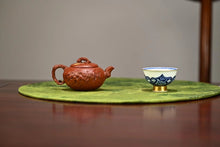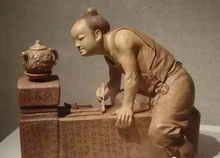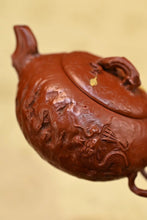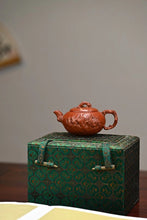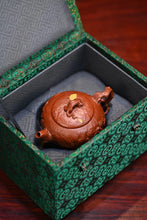
The first purple clay teapot recognized in history,
It is called Gongchun, and the person who makes the pot is also called Gongchun.
Chinese people have a long history of drinking tea, but until the Ming Dynasty,
Teapots have only been widely used. Chinese people have never stopped making efforts in drinking tea. Teapots made of clay can also be varied.
In the land of China, which is vast and rich in resources, the advantages of pots made of Yixing mineral soil are slowly being discovered. According to Wu Meiding's "Preface to Yangxian Porcelain Pot", during the Zhengde period of the Ming Dynasty, a scholar was reviewing for the exam at Jinsha Temple in Yixing. His scholar Gongchun learned from the monks of Jinsha Temple how to make purple sand pots in the temple, and Gongchun imitated it. I made a pot from the galls of the big ginkgo tree next to Jinsha Temple. I made it randomly. Unexpectedly, after it was fired, the pot turned out to be very simple and cute, which was very suitable for the literati. So I made this kind of purple clay pot that imitates the natural form. The pot became famous, and people called it a spring pot.
The tree gall pot now in the Museum of Chinese History was made by him. It has a simple shape, with looming finger threads, and the word "Gongchun" written in seal script on the inside of the handle and on the pot body. With the emergence of the first purple clay teapot, its superior tea-making function has been recognized by more and more people. As the first purple clay teapot that appeared in history, almost everyone who learns to make teapots will imitate it, but they are all very similar. This time I saw an improved version of Chen Zhen's innovative small spring teapot at Tongxinshe Teahouse, with a capacity of 130cc. There was a flying dragon hidden in the mottled texture of the teapot, which was very unique.
The dragon is the totem of the Chinese nation, and combined with the first purple clay teapot, such an innovative teapot shape is of great significance, so Tongxinshe Teahouse has specially reserved 3 teapots to recommend to everyone.
It is not easy to create the traditional spring pattern, but it is even more difficult to add the representation of a dragon, appearing faintly on the body of the pot without stealing the show, and integrating it into the overall style. The texture of the pot body is mottled, like a vicissitudes of ancient trees, with a dragon flying inside it. Its body is long and powerful, sometimes breaking through the wall, sometimes diving low, as if swimming in the deep sea, as if soaring in the nine heavens. It is powerful and majestic, with both form and spirit, and extraordinary meaning.
The author, Chen Zhen, is a national assistant arts and crafts artist and a member of Shanghai Arts and Crafts. He was born in 1986. He has been exposed to purple clay pottery since childhood and graduated from Nanjing Normal University (Ceramic Art Design). In 2019, he participated in the Humanistic Ceramic City Art Training Class organized by the School of Continuing Education of Tsinghua University and graduated on December 19. She studied under Jiang Rong, the daughter of the great master of flowerware Jiang Rong (one of the "Seven Elders of Zisha" in Yixing: Ren Ganting, Zhu Kexin, Wang Yinchun, Wu Yungen, Pei Shimin, Gu Jingzhou, Jiang Rong), the inheritor of intangible cultural heritage and a senior arts and crafts artist. Became the fifth generation inheritor of Jiang's flower utensils.







